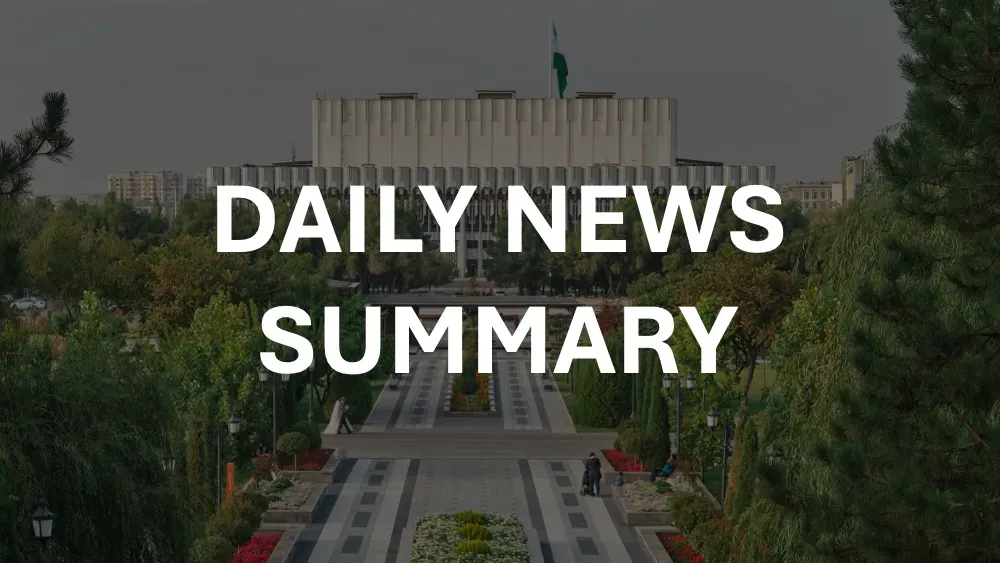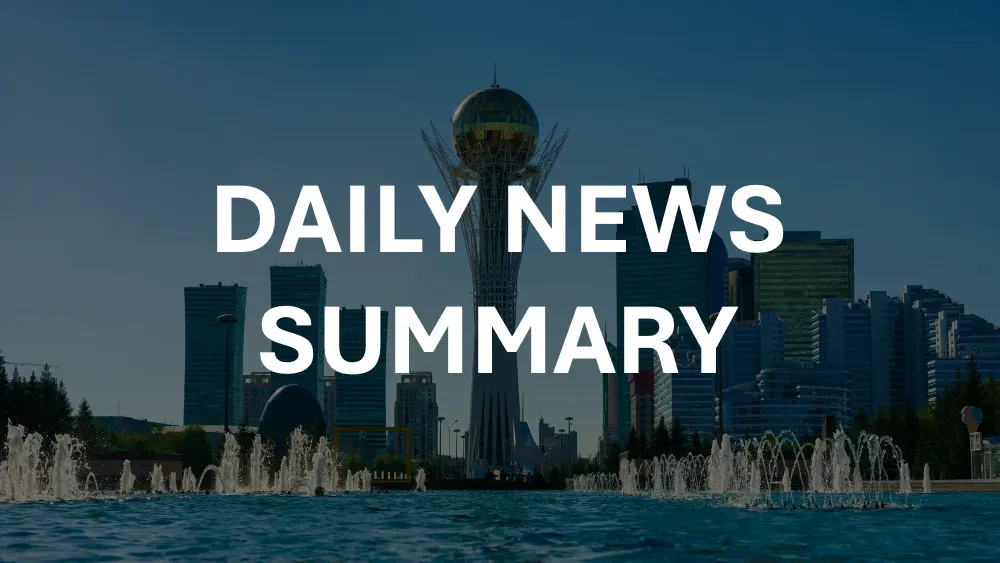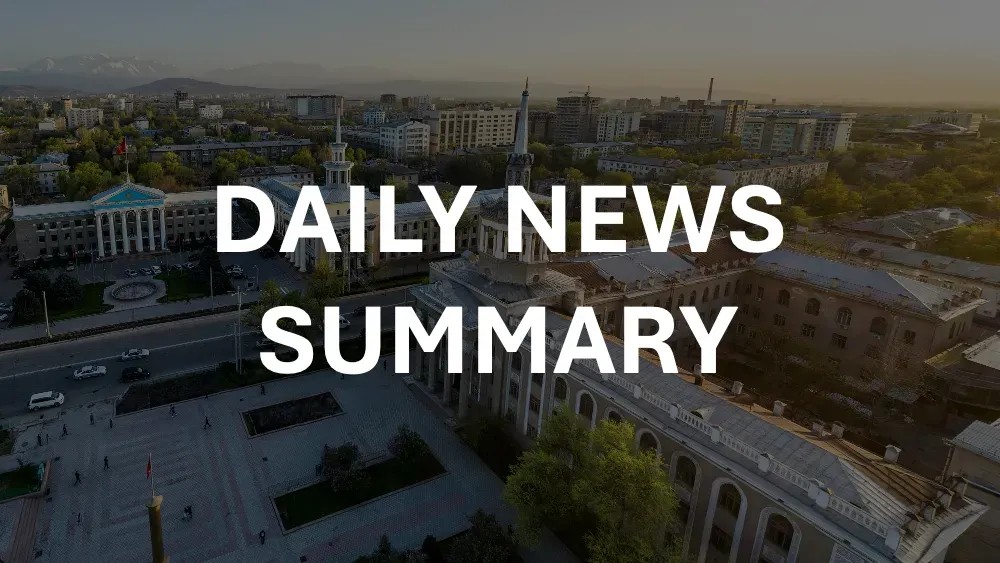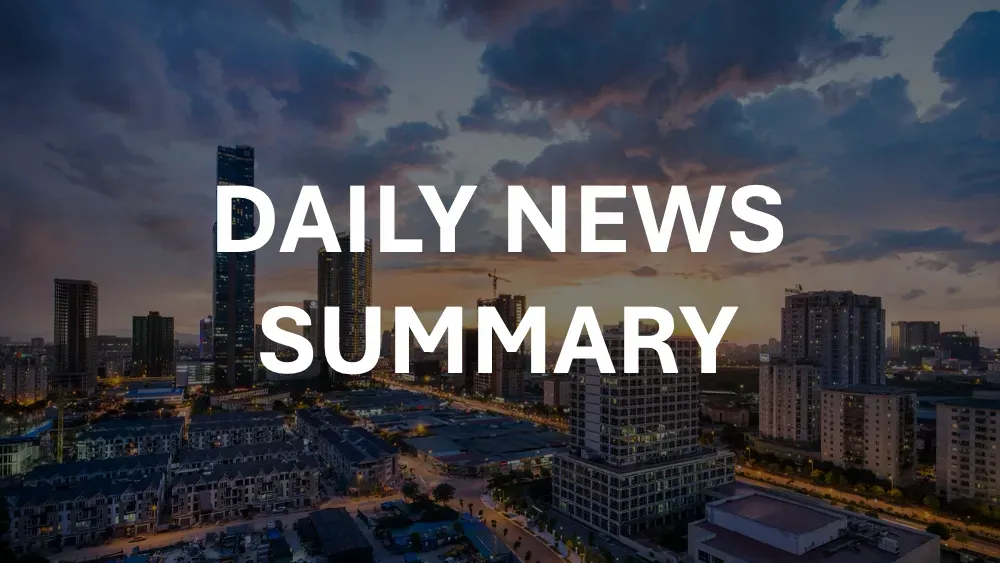📍 Get daily intelligence from Mongolia and Central Asia. Lexica News delivers local news that shapes global decisions—synthesized from local sources international media misses.
Foreign direct investment in Mongolia increased by 94.8 USD million in January 2025, reflecting continued investor interest despite regulatory uncertainties. The country's investment environment presents a complex landscape where record-breaking mining revenues coexist with significant procedural challenges for international businesses. Recent IMF assessments indicate that while Mongolia's economy is projected to grow 5.5 percent in 2025, driven by robust mining sector performance, foreign investors continue to navigate substantial regulatory burdens and policy uncertainty. This analysis examines the current state of Mongolia's foreign investment climate, documenting actual investor experiences and regulatory realities that shape international business decisions in this resource-rich landlocked economy.
Current Landscape: Mining-Dominated Economy Seeks Diversification
Mongolia's foreign investment climate centers heavily on its extractive industries, with mining representing 28% of GDP and comprising 92% of all exports in 2024. The sector generated unprecedented revenues, with coal export earnings reaching $8.6 billion from 83.7 million tons shipped primarily to China. This represents a dramatic increase from 36.6 million tons exported in 2019, demonstrating the sector's rapid expansion over the past five years.
The investment landscape reflects this mining focus, with most foreign direct investment directed into the extractive sector due to Mongolia's estimated mineral wealth of $1-3 trillion. Major projects like Oyu Tolgoi, where Rio Tinto has invested $15 billion since 2010, illustrate both the scale of foreign investment and the complexities investors face in Mongolia's regulatory environment.
Current foreign investment regulations require each foreign investor to contribute a minimum of $100,000 when establishing or acquiring 25% or more of a Mongolian company. This threshold applies to each individual foreign investor, creating higher entry barriers compared to domestic investors who face no minimum investment requirements. The 2013 Investment Law eliminates distinctions between foreign and domestic private investors in most sectors, though significant exceptions remain in practice.
Recent legislative changes have introduced new complexities for foreign investors. Parliament in 2024 revoked provisions allowing foreign investors to obtain land possession and use rights through the Investment Law, with these processes now governed exclusively by Mongolia's Land Law, which restricts foreign land ownership. These changes reflect ongoing tensions between encouraging foreign investment and maintaining national control over strategic assets.
Documented Experiences: Investor Realities in Practice
International businesses operating in Mongolia report significantly different experiences from what legal frameworks suggest. The U.S. State Department's 2024 Investment Climate Statement documents that "businesses face substantial and unpredictable regulatory burdens at every level," with officials across ministries and agencies routinely contravening existing law and regulation.
The Oyu Tolgoi project exemplifies these challenges. Despite being Mongolia's largest foreign investment, Rio Tinto faces a 7-year tax dispute with the government over differing interpretations of tax law applications. The dispute centers on whether tax stabilization agreements cover only rates or include procedural requirements, with Rio Tinto offering a $295 million settlement to resolve claims that have been ongoing since 2016.
Foreign investors consistently report challenges with tax administration. Companies describe a process where officials issue excessive, confiscatory tax assessments to coerce settlements, effectively creating indirect expropriation risks. The General Tax Authority's inability to resolve disputes in predictable timeframes compounds these concerns, with investors citing both long delays in court judgments and equally long delays in enforcement.
Business registration experiences vary significantly from stated timelines. While the Investment Law promises streamlined processes, companies report that obtaining necessary permits and licenses often requires navigating multiple agencies with overlapping and sometimes contradictory requirements. Foreign state-owned enterprises face additional scrutiny when acquiring more than 33% stakes in mining, banking, finance, or telecommunications sectors, requiring government approval that can extend timelines indefinitely.
Land use rights present particular challenges for foreign investors. Despite legal frameworks allowing land use agreements, companies report that restrictions on transferring, collateralizing, or selling these rights limit their practical utility for securing financing or executing exit strategies. These limitations, available only to Mongolian nationals or majority-Mongolian owned entities, create structural disadvantages for foreign investors.
Stakeholder Realities: Government Data vs. Business Reports
Government statistics present a positive investment narrative that contrasts sharply with business experiences on the ground. Official data shows gross international reserves maintained at $4.7 billion through end-August 2024, supported by FDI inflows and external borrowing. However, businesses report that accessing these benefits requires navigating complex bureaucratic processes that often contradict stated policies.
State-owned enterprise (SOE) performance data reveals significant challenges in Mongolia's business environment. The government operates 460 corporations wholly or partially owned by state and local governments, with mining SOEs controlling 69% of all SOE assets. Critically, 43% of SOEs operated at a loss according to 2023 financial reports, raising questions about management efficiency and competitive fairness.
Foreign investors express particular concern about judicial treatment of disputes involving SOEs. Business surveys indicate that domestic and foreign investors perceive courts fail to hold SOEs to the same legal standards as private companies, with no documented cases of foreign plaintiffs prevailing against SOEs in Mongolian courts. This perception significantly affects investor confidence in legal protections.
The 2024 sovereign wealth fund legislation illustrates the gap between policy intentions and investor reception. While the government positions the fund as promoting economic prosperity and social development, investors criticize the complete lack of transparency in the legislative process, with stakeholders given less than a week to review and comment on provisions requiring private holders to transfer non-compensated 34% stakes in strategic deposits.
Banking sector reforms demonstrate similar patterns. The 2021 Banking Law amendment limits individual ownership to 20% and required compliance by December 2023, but implementation experiences vary significantly among institutions. Foreign banks report different treatment in regulatory enforcement compared to domestic institutions, suggesting inconsistent application of ownership rules.
Tax incentive implementation reveals another disconnect between policy and practice. The Investment Law offers tax stabilization certificates covering corporate income tax, excise taxes, customs duties, VAT, and royalties for qualifying investments. However, current tax law has not been amended to be consistent with the Investment Law, meaning these incentives remain unimplemented despite being formally available.
Understand Mongolia Like an Insider
This analysis draws from extensive research, but the story continues to evolve daily. Lexica synthesizes breaking developments from dozens of Mongolian news sources—from mining policy changes to local protests that never make international headlines.
Our daily intelligence briefs help executives, diplomats, and researchers track:
- Regulatory shifts affecting foreign investment
- Local opposition to development projects before they escalate
- Market dynamics that signal opportunity or risk
- Political developments that reshape the business landscape
Operational Context: Costs, Timelines, and Regulatory Processes
Real operational costs for foreign investors in Mongolia significantly exceed initial estimates due to regulatory complexity and unpredictable enforcement. The $100,000 minimum investment threshold represents only the entry point, with companies reporting additional compliance costs that can reach 15-20% of total project budgets for regulatory navigation and dispute mitigation.
Corporate registration processes, while theoretically streamlined under the 2013 Investment Law, often require 3-6 months in practice compared to the 30-day timeframe suggested in official guidance. Companies report that obtaining sector-specific licenses, particularly in mining, can extend timelines to 12-18 months when including environmental assessments, community consultations, and multiple agency approvals.
Recent mining sector developments illustrate evolving operational requirements. The 2024 sovereign wealth fund legislation requires private holders to reduce ownership in strategic deposits to no more than 34% by May 2025, with 16 deposits currently labeled as strategic. This creates immediate operational challenges for companies with existing investments exceeding these thresholds.
Infrastructure development costs present additional operational considerations. Mongolia's landlocked geography means that 90% of coal exports depend on Chinese border crossings, creating transportation bottlenecks that affect project economics. Companies invest heavily in cross-border infrastructure, with 14 strategic mega projects scheduled for 2024-2028 to address capacity constraints.
Environmental compliance costs have increased substantially. New environmental regulations require companies to conduct extensive impact assessments and community consultations, with some projects reporting environmental compliance costs reaching 10-15% of total capital expenditure. The government's commitment to Nationally Determined Contributions and National Adaptation Plans adds additional layers of environmental review to investment projects.
Currency and financial transaction costs create ongoing operational expenses. Companies report challenges with profit repatriation processes, despite legal frameworks allowing free transfer of profits and assets. Banks require extensive documentation to demonstrate compliance with tax obligations, often taking 30-60 days to process international transfers.
Legal and arbitration costs represent significant operational considerations. Mongolia's membership in ICSID since 1991 and the New York Convention since 1994 provides international arbitration options, but companies increasingly budget for legal contingencies given ongoing disputes like the Oyu Tolgoi case, which has been in London Court of International Arbitration since 2020.
Regional Comparison: Mongolia's Position Among Asian Emerging Markets
Mongolia's foreign investment climate presents distinctive challenges compared to regional peers in Central and East Asia. The country's Foreign Investment Protection and Promotion Agreements with 43 countries and double taxation treaties with 26 nations provide extensive legal frameworks, yet practical implementation lags behind regional standards.
Compared to Kazakhstan, Mongolia's northern neighbor with similar resource endowments, Mongolia requires higher minimum investment thresholds and maintains more restrictive land ownership policies. Kazakhstan allows foreign investors to establish companies without minimum capital requirements and provides more flexible land use arrangements for industrial projects. However, Mongolia's bilateral investment treaty with the United States, in force since 1997, offers stronger investor protections than Kazakhstan's more recent agreements.
Vietnam and Indonesia, as regional reference points for foreign investment policies, demonstrate different approaches to balancing resource nationalism with investment attraction. Vietnam's manufacturing-focused FDI policies contrast with Mongolia's resource-centric approach, while Indonesia's recent mining sector nationalization efforts parallel Mongolia's 2024 sovereign wealth fund requirements. However, both Vietnam and Indonesia provide more predictable regulatory timelines and lower administrative burden scores in international business climate rankings.
China's role as Mongolia's dominant trading partner creates unique regional dynamics. China accounts for 90% of Mongolia's coal exports and represents Mongolia's largest source of foreign investment, creating dependencies that affect policy flexibility. Recent agreements for cross-border rail links to increase export capacity to 165 million tons demonstrate Mongolia's continued integration with Chinese markets despite efforts to diversify through the "Third Neighbor" policy.
Regional development banks show varying engagement levels with Mongolia compared to neighboring countries. The Asian Development Bank projects Mongolia's GDP growth at 6.6% in 2025, higher than most regional peers, but warns about inflation risks at 9.1%. The European Bank for Reconstruction and Development has invested nearly $2 billion in Mongolia, primarily in mining, energy, and financial sectors, reflecting confidence in long-term prospects despite regulatory challenges.
Mongolia's dispute resolution mechanisms compare favorably to some regional peers through ICSID membership and international arbitration acceptance, yet the ongoing Rio Tinto dispute highlights practical limitations. Regional competitors like Uzbekistan and Kazakhstan have streamlined investment dispute processes that provide faster resolution timelines, giving them advantages in investor confidence ratings.
Conclusion
Mongolia's foreign investment climate in 2024-2025 presents a paradox of substantial economic opportunities constrained by regulatory complexity and policy uncertainty. Record mining revenues of $8.6 billion from coal exports and continued growth projections of 5.5% demonstrate the country's economic potential, yet foreign investors navigate an environment where stated policies often diverge from implementation realities. The 2024 sovereign wealth fund legislation exemplifies this challenge, introducing retroactive ownership requirements with minimal stakeholder consultation while aiming to address legitimate concerns about resource wealth distribution.
Current data indicates mixed investment trajectories, with FDI inflows continuing despite regulatory headwinds and ongoing disputes like the Rio Tinto tax case highlighting systemic challenges in dispute resolution. The IMF's assessment that improving business climate and governance remains critical for sustainable growth reflects broader recognition that Mongolia's regulatory environment requires substantial reform to match its economic potential.
Key developments to monitor include the May 2025 deadline for strategic deposit ownership restructuring, resolution of major tax disputes, and implementation of IMF-recommended reforms to Investment Law and Minerals Law frameworks. The government's ability to balance resource natio.nalism with investment attraction will significantly influence Mongolia's position in regional investment flows, particularly as neighboring markets enhance their competitive advantages through regulatory modernization. For international businesses, Mongolia's investment climate requires careful assessment of both substantial opportunities and equally substantial regulatory risks in an economy where natural resource wealth and policy uncertainty coexist.
Frequently Asked Questions
What are the current minimum investment requirements for foreign investors in Mongolia?
Foreign investors must invest a minimum of $100,000 when establishing or acquiring 25% or more of a Mongolian company. This requirement applies to each individual foreign investor, meaning multiple foreign investors each need to meet the $100,000 threshold. Domestic Mongolian investors face no such minimum requirements, creating different treatment standards.
How does the 2024 sovereign wealth fund law affect existing foreign investments?
The law requires private holders of strategic mining deposits to reduce ownership to no more than 34% and transfer at least 34% to the state without compensation by May 2025. This affects 16 deposits currently labeled as strategic. Companies with existing investments exceeding 34% must restructure their holdings or face forced divestment.
What protection do bilateral investment treaties provide to foreign investors?
Mongolia has investment protection agreements with 43 countries, including a U.S.-Mongolia BIT effective since 1997. These provide protection against expropriation and access to international arbitration through ICSID. However, ongoing disputes like the Rio Tinto tax case demonstrate that treaty protections require lengthy legal processes to enforce.
How long does business registration typically take for foreign investors?
While official guidelines suggest 30-day registration timelines, companies report actual processes taking 3-6 months for basic registration and 12-18 months when including sector-specific licenses, particularly in mining. Environmental assessments and community consultations often extend timelines further.
What are the main operational challenges foreign investors face?
Key challenges include unpredictable tax enforcement, lengthy dispute resolution processes, restrictions on land ownership and use rights, and regulatory inconsistencies between different government agencies. Currency controls and profit repatriation documentation requirements also create operational complexity.
How does Mongolia's investment climate compare to regional peers?
Mongolia offers extensive legal frameworks through bilateral investment treaties but faces implementation challenges that create higher administrative burden compared to Kazakhstan or Vietnam. The country's resource-focused economy provides significant opportunities but with greater regulatory uncertainty than manufacturing-oriented regional competitors.
What sectors are restricted for foreign investment?
Foreign state-owned enterprises cannot acquire more than 33% of companies in mining, banking, finance, or telecommunications without government approval. Foreign investors cannot own land directly and face constitutional restrictions on land possession rights. Some strategic mining deposits have ownership limitations under the 2024 sovereign wealth fund law.
Track Mongolia's Critical Minerals Sector with Local Intelligence
The rare earth story exemplifies why local sources matter. While international media reports MOUs and ministerial visits, Mongolian outlets cover the community protests, water disputes, and regulatory changes that actually determine project outcomes.
Lexica delivers what you're missing:
- Daily briefs at 7AM Ulaanbaatar time covering 40 top stories from politics to economics
- Full-text synthesis from sources in Mongolian
- Searchable archive to track how today's announcements connect to yesterday's promises
- Multi-country coverage across Central Asia for regional context
Whether you're evaluating investment opportunities, monitoring supply chain risks, or analyzing geopolitical developments, local intelligence reveals what international headlines obscure.










